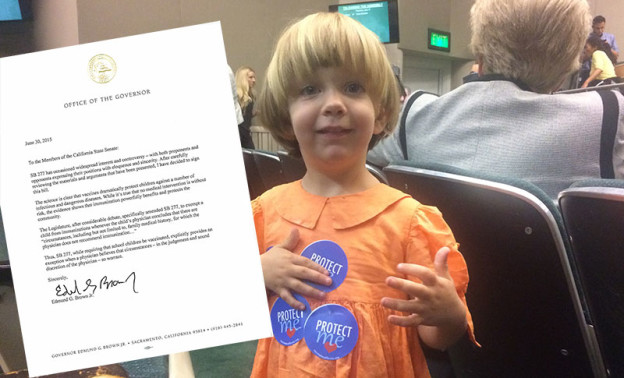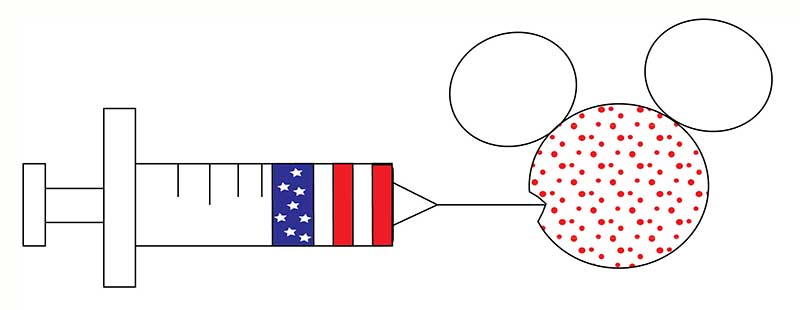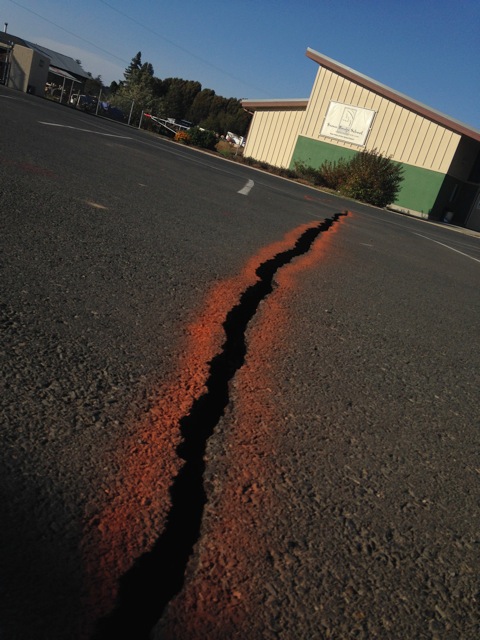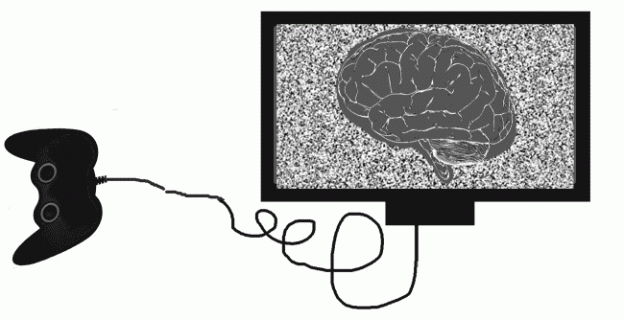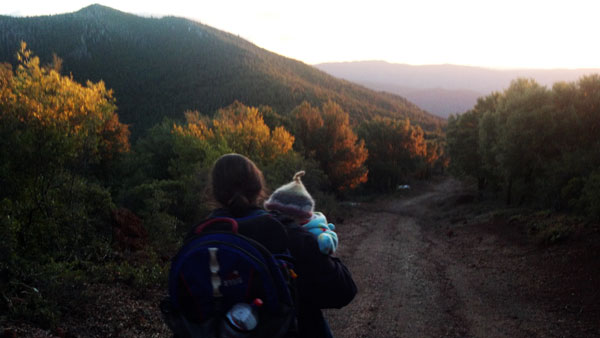Work consists of whatever a body is obliged to do, and…play consists of whatever a body is not obliged to do” – Mark Twain from Tom Sawyer
The head of the video game giant Capcom, Kenzo Tsujimoto, owns a great swath of land in Napa. My husband worked for him for a while, though he hardly interacted with him directly, and always through an interpreter. But on one occasion, Kenzo happened to be nearby as Michael emerged from his old, trundling diesel Mercedes. He peered from beneath his white straw hat at the carseats packed in the back and the man who had made a billion dollars on Streetfighter said in firm, accented English, “Don’t let your children play video games.” Why? What did he know? Michael didn’t ask, but assured him our children were well protected. We had long before decided that although we let them watch the occasional movie, video games would not be part of their media diet.
We have invoked this story as needed over the years as the best defense against our critics, mostly other parents who insist we are Luddites, sheltering our children from contemporary culture. But here we had a message from on high: the head of one of the biggest gaming companies in the world knows with absolute certainty that the stuff he’s feeding our children, if they can get their hands on it, is some kind of terrible, brain damaging junk. Or is it? New research says that Kenzo may have it wrong.
In 2001 Daphne Bavelier, a researcher at The University of Rochester was developing a simple test for vision in the hearing impaired. She was confused to find that her graduate student and all of his friends scored wildly high on the test while Bavelier showed average results. Was this a statistically rare pod of geniuses? No, the skill difference turned out to be the result of logging many hours playing video games. The troubling part for parents is that the games they were into are the kind that even the most techno-indulgent find abhorrent for children.
Piles of research and anecdotal accounts show that violent video games have a negative impact on behavior. And in my circles in liberal, neo-hippie Northern California, this is a popular position. But these findings are not so clear-cut. There is no link, for example, between violent video game play and actual violent crime. And when the child has positive influences, including parental involvement, and strict boundaries, the differences in behavior largely disappear. On the other hand, it turns out that intense, violent games do profoundly impact our ability to learn.
The effect covers various regions of the brain, a phenomenon chased by education specialists called, “far transfer.” The gamers don’t just become better at shooting their target, they become better at just about everything related to learning.
Attention is the beating heart of education. Without it, the brain is like a radio station between signals. Ironically, video games are often on the list of culprits in the epidemic of attention disorders. But I wonder if by lumping dissimilar activities into one category of offenders we lose the picture of what is actually affecting us for good and bad.
In terms of attention, it is likely the way we engage with media that has an ill effect on our executive function. Watching videos while texting; updating Facebook while emails plink in may feel like benign multi-tasking, but, according to neuropsychologists, it’s actually exhausting us. The brain has no downtime in this scenario. Even keeping the background visible on my monitor as I type, taxes my mental process, taking energy away from the sentence at hand. When attending to multiple streams of information, the brain has no opportunity to deeply engage in any one activity where understanding develops.
In his book, The Shallows, Nick Carr makes a case against our current culture of the Internet and multi-tasking. “With the Net, we face many information faucets, all going full blast. Our little thimble (working memory) overflows as we rush from one faucet to the next.” He compares this to reading a book, a potentially absorbing activity where information has a chance to drip in a constant single stream, where long-term memories have the chance to be forged. In a single shooter video game you can do nothing but defend and survive your way to the next level. It is one form of entertainment that, like that rare good book, is utterly immersive. Not all games are created equal, however, and the most blatantly terrible ones may be the most compelling for our brains.
Throughout single person shooter games, the user is constantly re-orienting herself in space; paying close attention to an ever-changing situation and looking for clues to make her next move. The heart is pumping blood to the brain, adrenaline is emitted keeping the user alert, dopamine and epinephrine release feelings of pride and happiness as the enemy is vanquished. As a result, according to Bavelier, vision, spatial judgment, response time, hand-eye coordination and most importantly, attention all improve. These positive effects can take a few sessions to be realized and remain for months, possibly much longer.
In one study, high school age gamers out-performed surgical residents in a mock laparoscopic surgery. A number of other studies have repeated this finding that accuracy in laparoscopic surgery is more closely associated with the amount of time the doctor has spent with a gaming console rather than in actual surgeries. So video games are the ideal training environment for hand-eye coordination in a virtual environment. But how are these visual attention skills relevant to the average person?
Staying focused on safely navigating a steel and aluminum beast is a huge and perilous task for the mind. The radio is playing, the kids are caroling in the back, the phone rings at us through a hands-free device as we hurtle a 4,000 lb. machine at sixty miles per hour. In 11 million accidents last year in the U.S., 33,000 lives were lost. I recently took a mind-numbing drivers education course after getting pinged for not regarding my speedometer before the policewoman did. I wasn’t even late not late, I was just spacing out. After finishing the ten hours or so of instruction and testing to keep points from my record, I am no smarter. I am humbled by the $300 ticket, but I doubt I am a safer driver because I briefly memorized and promptly forgot how many feet of braking distance is required in fog. Yet what if I had been required to play an action video game instead of click on multiple-choice questions?
Distinguishing gradations of grey, holding on to several pieces of information at once, focusing, are all characteristics of good drivers. I’d like to know the gaming habits of my surgeon, but since this relationship may never come to pass, a statistically more pressing concern is other drivers on the road. I can see a future where gaming is a necessary component of safety training.
What about education? In a study by Christopher Sanchez that demonstrated the far transfer effect of gaming (also quoted in the SciMind article where I first encountered Bavelier’s work), he took two groups of students and gave them a lecture on something they previously knew nothing about: plate tectonics. One group was given a competitive spelling game before the lecture. The second group was given a single shooter video game to play. When they were asked to write an essay on the lecture, the action gaming group scored higher in retention of facts and the ability to make connections to the material. They also did better on a spatial reasoning test. In another study, he demonstrated how the spatial reasoning gender gap was closed by giving girls the same exposure to action video games as boys. Spatial attention and the ability to mentally rotate objects have been linked to ability in science and math. This implies that we could potentially close the science and math gender gap with video game training.
The surprise factor of these findings reveals how little we understand about the ways new technologies affect us. What I like is that they are optimistic discoveries. Our brains are malleable and gaming technology is powerful.
Right now there is a plethora of programs that claim to upgrade our brains. But experts remain skeptical about the benefits for the broader public. In the arena of therapeutic interventions, it’s a different story.
Though we generally shun the screen as our kids’ entertainment source in my house, we have pursued some screen-based therapies for our 11 year old son. He struggles academically with auditory processing and more recently identified, a working memory deficit. His teacher reported that H couldn’t remember multi-step instructions, do long division, organize his workspace, or keep track of the rules of a game. None of this was a huge surprise, but the concern was amplified by the realization that remediation attempts were not sticking.
While looking for programs to address math learning disability, I landed on one designed specifically for working memory, called Cogmed. Developed by the Swedish neuroscientist, Torkel Klingberg (also author of The Overflowing Brain and The Learning Brain) it is the only program I found with a solid research basis, including a double blind study – the gold standard in scientific research. It also has the biggest price tag and requires clinical oversight. I didn’t want to make H’s brain into a test kitchen for brain apps, and did want to tackle what suddenly appeared to be a tamable beast, so we took it on.
The results for H were good. His ability to hold on to information and to recall both got noticeably better. He quoted a line from a play he had seen a day earlier. He’d never quoted anything, ever before. Though he would emerge from the therapy in a brief grizzly fog, his overall mood mellowed and matured. The neuropsychologist who supervised his therapy told me that before Cogmed she had little to offer her patients who suffered from working memory disorders. Now, she claims, it fixes these people.
Good working memory allows us to dial phone numbers, read with comprehension, organize, plan, follow driving directions, along with just about every task you can think of. It is the brain’s way station where information is held until it serves its purpose or is discarded. Poor working memory is like an emergency room with one bed that handles patients on a first come first serve basis: you might die waiting. A person with bad working memory may seem disorganized, easily distracted, or unable to follow instructions, characteristics of ADD. Until recently it was thought that one’s capacity was relatively fixed. But even in the elderly, working memory can be improved.
Though we saw a change for the better, I would not say Cogmed fixed my son’s deficit. The effects are supposed to be permanent. In my son, as far as I can tell, the most dramatic changes seem to be fading after just a few weeks. Since I don’t want to subject him to a daily test, I have to rely on my gut when it comes to his abilities. How many times did he forget his lunch this week? Did he play games at recess or run off frustrated?
One of the games requires recalling the locations of red dots as they move around a circle. Another task is a series of numbers which you must repeat, backwards. The exercises get progressively harder as you achieve more, and ratchet back if you miss a few. The games are challenging, but the truly unfortunate aspect of Cogmed is that they are excruciatingly boring. They even provide a printed chart to manually mark progress since the exercises are not compelling in themselves. In her breathless manifesto on how gaming will change the world, Jane McGonigal says, “Games developers know better than anyone else how to inspire extreme effort and reward hard work.” Yet when a poorly designed game misses this key, motivational piece, it’s not a game at all, it’s drudgery.
As Gabe Zicherman says in Gamification by Design, “…once teachers and parents got involved (in game design), they systematically extracted the fun…Kids could smell that shift from fun to work a mile away.” The success of the Cogmed program, despite its rudimentary game design, is a testament to the power of this activity on brain function even without a compelling visual or narrative framework. Imagine the deep response when this kind of brain therapy tool is paired with a truly gifted designer. I’d be bribing H. to stop, not start.
The thought of my kid blowing up virtual victims in the name of cognitive therapy goes against my most closely held principles of parenting and education. But as I recover from mental whiplash, I am reckoning with the benefits of such an approach. Bavelier and others are working with game developers to try to maximize the benefits of gaming while minimizing the brutal violence. And I expect Cogmed is working to improve the appeal of their beeping robot. But that future may still be years away. In the meantime, I think my son will be pleased to put therapeutic interventions aside and take up some good, bloodthirsty, gameplay. If I am reading Bavelier’s research correctly, and a $60 game is capable of affecting the same brain regions as Cogmed, I’m ready to take the plunge, guns and all.
I’m happy to report to Kenzo that we will be disobeying his orders because despite Capcom’s best efforts, his games may actually be doing some good.
some of the materials that informed this post:
Lydia Denworth Brain Changing Games, SciMind, January 2013
Daphne Bavelier on TED
Reality is Broken by Jane McGonigal
The Shallows by Nicholas Carr
Cogmed
Gamification by Design by Gabe Zichermann
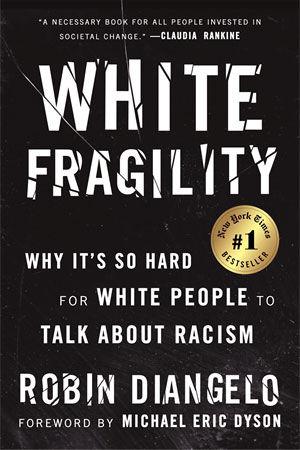 Words hurt, words heal, and sometimes, well-crafted words do both as they aptly explain. The truth. Robin D’Angelo’s words in White Fragility do all of the above as she explains the background we are so totally oblivious to as white people.
Words hurt, words heal, and sometimes, well-crafted words do both as they aptly explain. The truth. Robin D’Angelo’s words in White Fragility do all of the above as she explains the background we are so totally oblivious to as white people.

 Follow
Follow
